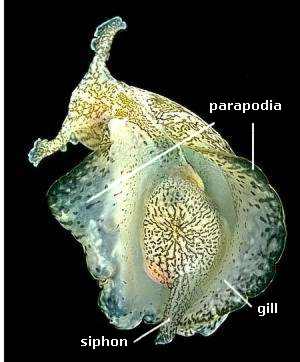Behavioral Neuroscience, lecture on Aplysia and Efferent Motor output to produce Siphon Withdrawal
Siphon Withdrawal
VI. Motor output driving Siphon Withdrawal
A. Siphon-gill withdrawal reflex Motor neurons
1. 13 Cell bodies in abdominal ganglion
2. terminals: siphon or gill
a. excitatory
i. Acetylcholine (ACh)
ii. bind Nicotinic-like receptors
(1) just like vertebrate motor junctions
3. stimulates retraction of gill and siphon within mantle
B. Tail-siphon reflex motor neurons
1. 3 somata each left and right pedal ganglia
2. terminals in tail
a. excitatory
i. Acetylcholine (ACh)
3. stimulates defensive retraction of tail
4. siphon retraction requires interneuron activity
a. somata of motor neurons in abdominal ganglion
i. just like siphon-gill retraction
C. Adaptive modification of the reflexes requires Gating
1. via interneurons
2. to match the behavioral response to the level of threat
D. Sensory + Interneuron synaptic potentials summate
1. temporally and spatially
2. motor cells discharge repeatedly
3. results in strong reflexive withdrawal of gill/siphon/tail
